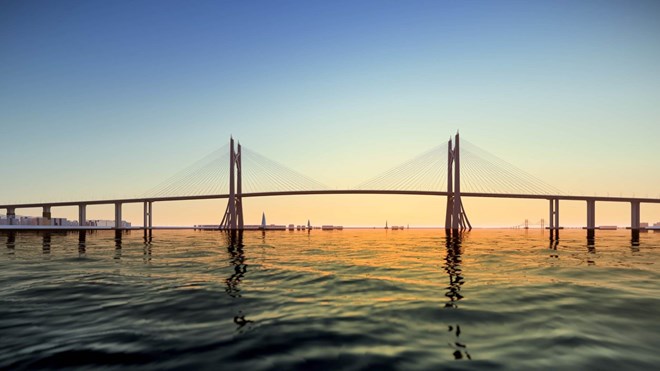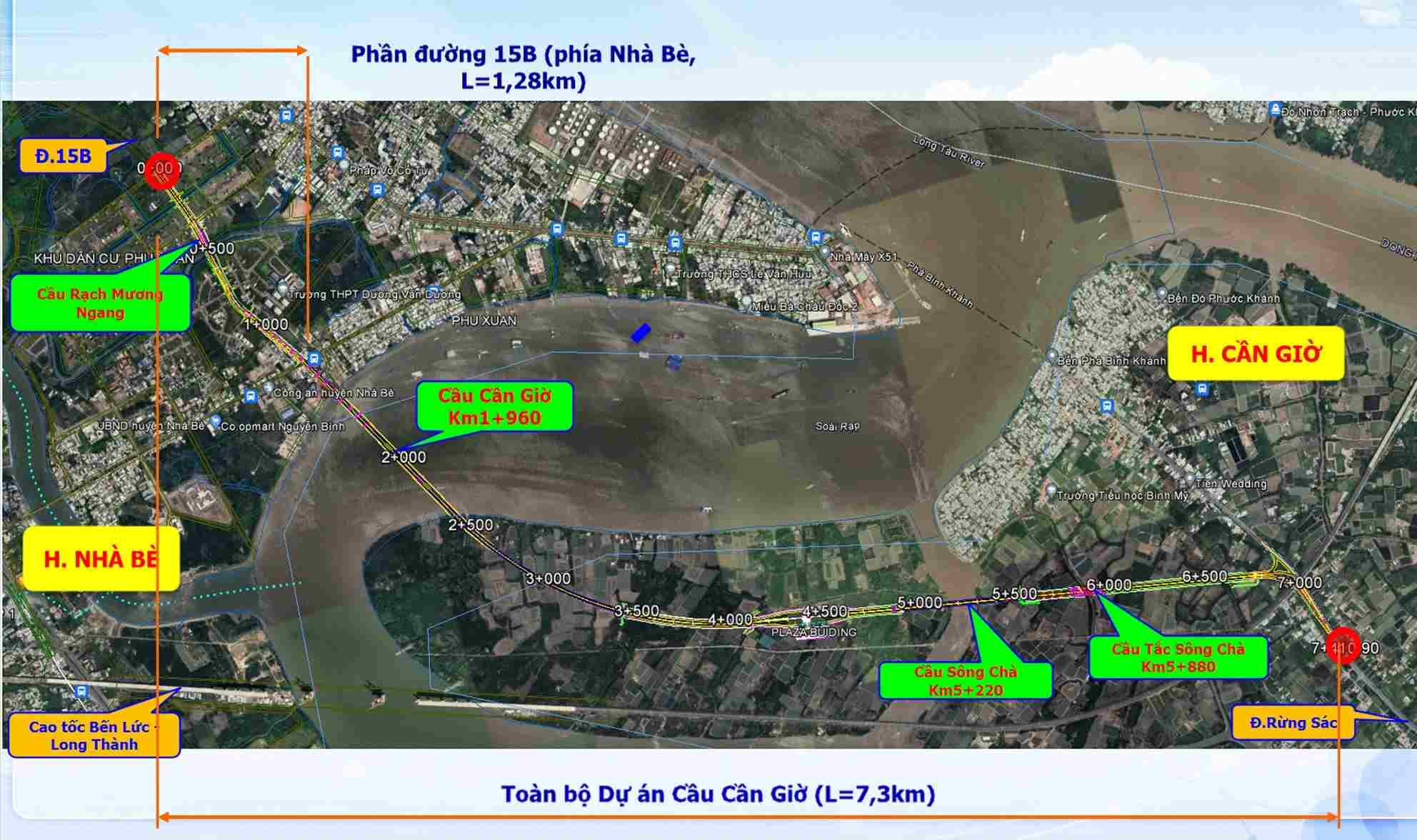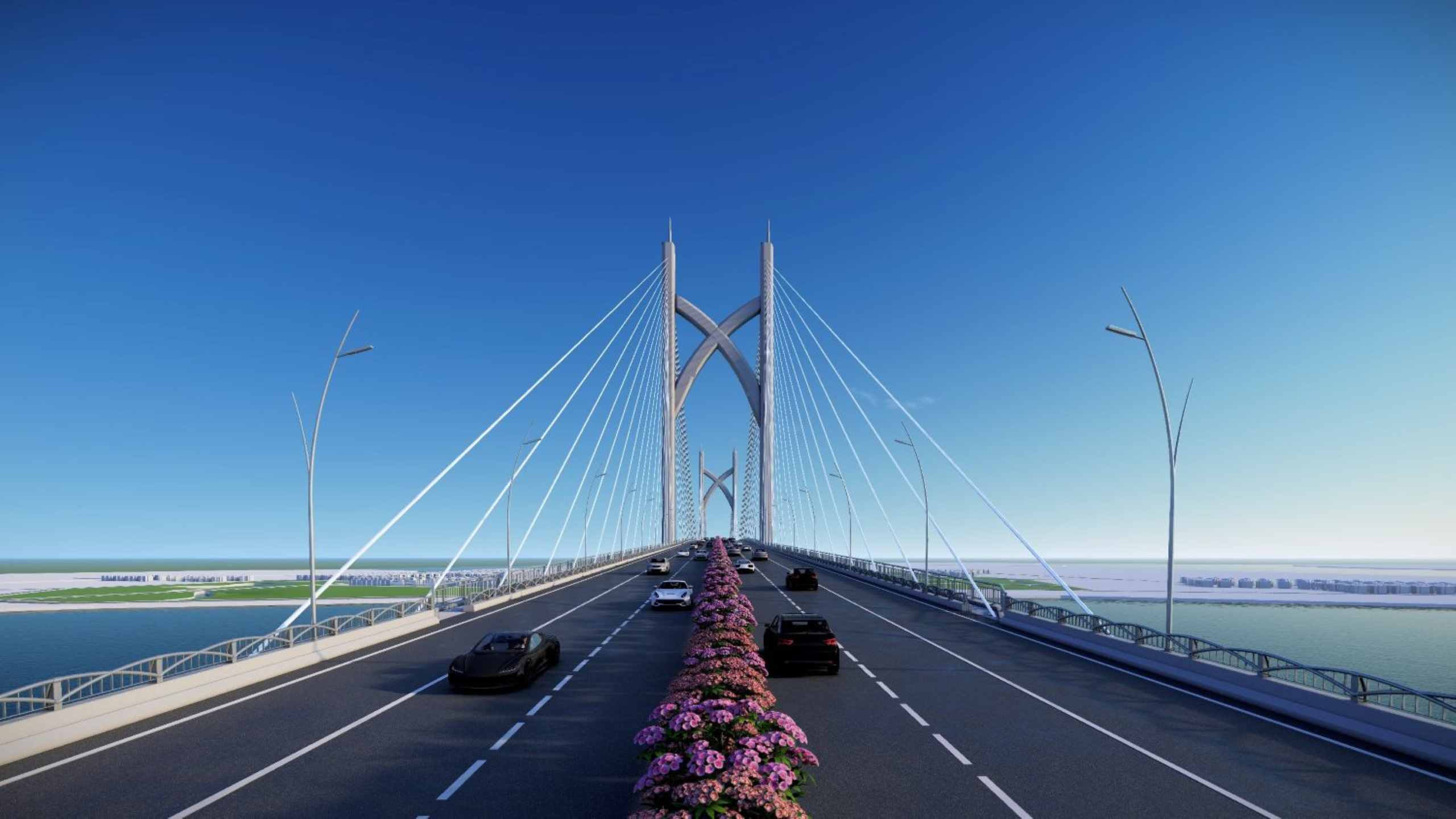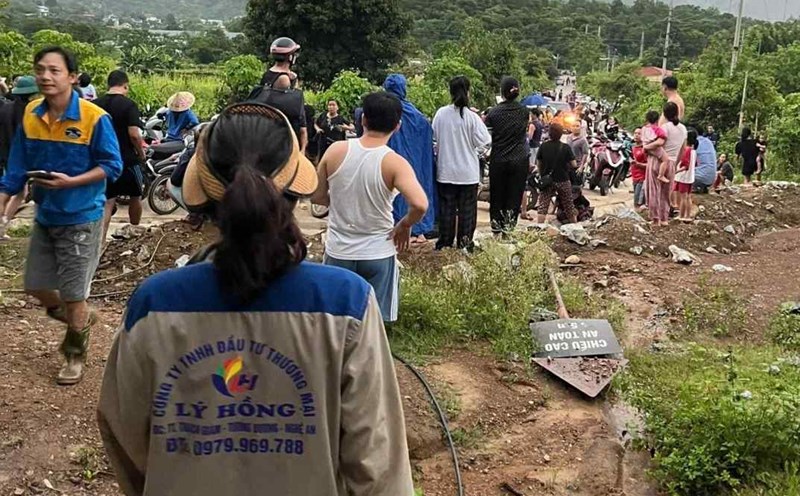According to the Ho Chi Minh City Department of Construction, the pre-feasibility study report of the Can Gio bridge project has been completed and submitted to the City Appraisal Council since December 2023.
The project is proposed to be invested in the form of BOT (build - operate - transfer), with a total investment of about VND 10,569 billion, the implementation period is in the period of 2024 - 2028.
However, up to now, the project has not been able to submit for approval the investment policy due to planning problems.
The Department of Construction said that Can Gio Bridge has not been shown in some important planning projects of Ho Chi Minh City such as: Project to adjust the general construction planning of Ho Chi Minh City to 2025 (approved by the Prime Minister in 2010) and Project to adjust the Transport Development Plan of Ho Chi Minh City to 2020, with a vision after 2020 (approved by the Prime Minister in 2013).
On May 9, 2017, the Prime Minister approved the addition of Can Gio Bridge to the Ho Chi Minh City Transport Development Planning Project to 2020 and vision after 2020.
The Government also assigned the Ho Chi Minh City People's Committee to update Can Gio Bridge in relevant planning and implement investment according to regulations. However, this update has not been implemented yet.
In addition, Can Gio Bridge has not been shown in the Project to adjust the general construction planning of Can Gio district (old) and zoning planning projects in Nha Be district (old).

According to the Department of Construction, Ho Chi Minh City is implementing the Project to adjust the city's general planning to 2040, with a vision to 2060 - just approved by the Prime Minister.
The Ho Chi Minh City People's Committee assigned relevant agencies and units to locally adjust 1/2000 scale zoning plans, specialized projects in technical infrastructure and urban transport related to complete the legal basis for appraisal and decision on investment policies for the Can Gio bridge project.
It is expected that Can Gio Bridge will complete the pre-feasibility study report and submit to the Ho Chi Minh City People's Council for approval of the investment policy in 2025.

According to the pre-feasibility study report, Can Gio Bridge has a total length of 7.3 km, including a main bridge nearly 3 km long and an approach road of more than 4.3 km. The bridge is designed with 6 lanes (4 car lanes, 2 rudimentary lanes), operating speed of 60 km/h.
The bridge is built in the form of a cable-stayed bridge, with a clearance of 55 m - the highest in Vietnam today, equivalent to Binh Khanh Bridge (on the Ben Luc - Long Thanh Expressway). This will also be the largest cable-stayed bridge in Ho Chi Minh City.
There are 3 small bridges on the route: Song Cha bridge is about 640.5 m long, 29.5 m wide; Tac Song Cha bridge is 64.2 m long, 40 m wide; Rach Muong Ngang bridge consists of two single bridges 64.2 m long, each bridge is 7.75 m wide.
The starting point of the project is located on Road 15B (Nha Be), about 500 m from Muong Ngang canal, cutting across Nguyen Binh road, crossing Soai Rap river and connecting with Rung Sac road (Can Gio), about 2.1 km south of the existing Binh Khanh ferry terminal.

Can Gio Bridge will replace Binh Khanh ferry, creating a direct connection between Can Gio and the center of Ho Chi Minh City, while opening a new traffic route connecting Can Gio with the southern area of the city.
The project also plays an important role in the development of two major projects in Can Gio: Can Gio coastal urban tourism area of 2,870 hectares (expected to welcome nearly 9 million visitors/year) and Can Gio International Transit Port.











